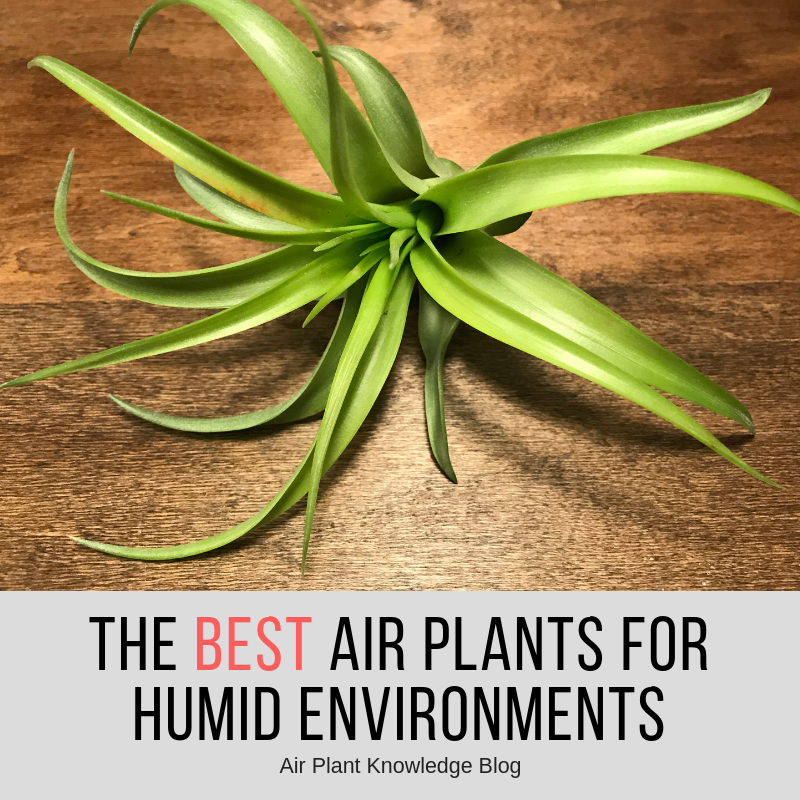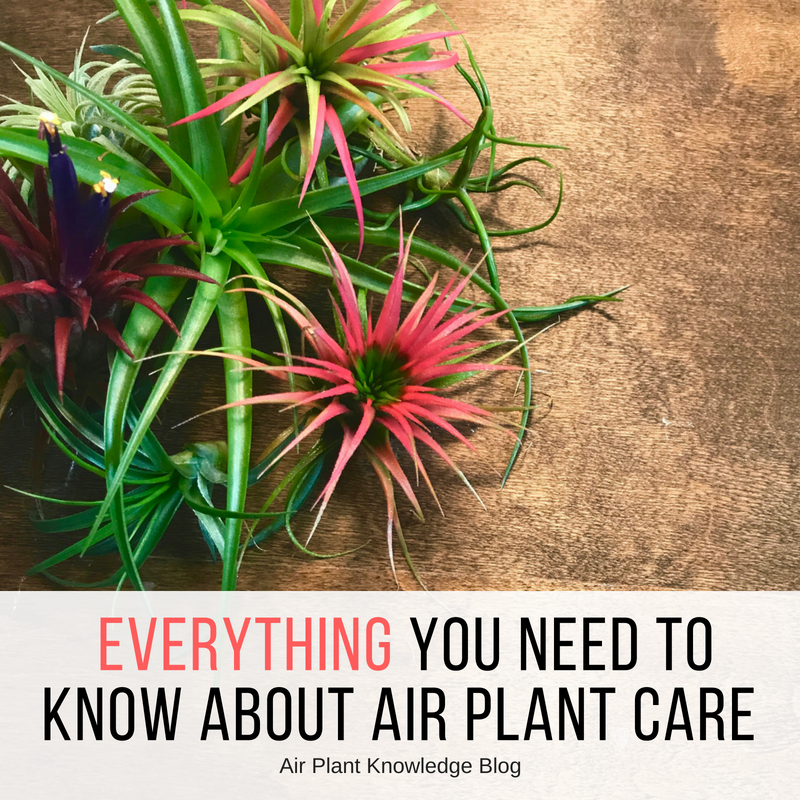The Best Air Plants For Humid Environments

The Best Air Plants For Humid Environments
If you live in an area that is humid year round you may have wondered which air plants would do best in your environment. Fortunately for you, there are a group of air plants that thrive in humid areas; these are referred to as Mesic Tillandsia.
To determine which Tillandsia are Mesic, examine the plant's leaf shape, color and trichome texture. Knowing the plant’s native origin will also help you compare its natural climate to yours. Mesic Tillandsias primarily come from Latin American jungles with ample rainfall and canopy shade cover. Because of this, Mesic plants prefer more frequent waterings than other air plant types and enjoy lower light conditions.

(Mrs. Air Plant Hub Holding A Mesic Air Plant)
Mesic Tillandsia show a light dusting of trichomes on their shiny, waxed-looking leaves. This results in a smooth, green, leaf appearance. Many, but not all, Mesic Tillandsia have U-shaped leaves that are stiff, solid-feeling, and tightly bound together in a bulb-shaped base. Other Mesic Tillandsia have wide, soft leaves that gently drape down. One thing that all Mesic Tillandsia have in common: they are green. You will not find a Mesic Tillandsia that is gray or white in color.
Some popular Mesic Tillandsia are:

Tillandsia bulbosa
T. bulbosa is found in Mexico, West Indies, Central America, Columbia, and Brazil, where it grows in the forest, in mangrove thickets and on lianas along the river from sea level to an altitude of 5,000 ft. In the wild, T. bulbosa grow horizontally or upside down to prevent the bulbous-base from rotting.
Tillandsia brachycaulos
Brachycaulos can be found naturally in various parts of central America at elevations of 600 - 1,200 meters. Brachycaulos can handle both high and low light levels, but prefers somewhere between the two. When in bloom, you can expose Brachycaulos to higher light levels, which will encourage it to bloom a bright red color.
Tillandsia butzii
T. butzii originates from Mexico to Panama, where it grows at elevations of 3,000 to 6,000 ft in areas exposed to wind, drought, sun and heat. Even though it can endure these natural conditions, Butzii prefer high humidity and cooler temps.
Mesic Air Plant Care
Water
Originating from humid environments with consistent rainfall, Mesic Tillandsia prefer more frequent watering than other air plants found in drier climates. During warmer months, Mesic Tillandsia will also need more watering during the week.
You can hydrate your Mesic Tillandsia by misting, soaking, or dunking in water. If you live in a humid environment, we recommend soaking for 30 minutes once every 2 weeks and misting every 3 - 4 days between soaks. The only air plants you want to avoid soaking are plants with bulbous bases (I.E. Bulbosa, Caput Medusae, Showtime, Streptophylla, Pruinosa, etc). These bulbous plants have hollow bases and water can easily get trapped inside. With bulbous plants, you can give a few dunks in water until thoroughly wet.
After watering your plant, make sure that it thoroughly dries within four hours. If you can, dry your plant bottom-side up, so that water has less chance of getting trapped in the base. If you keep your plant moist longer than four hours, there is a greater chance the plant will develop rot.
Light
Thriving under shade cover of the South American rainforest canopy, Mesic Tillandsia do best in bright, filtered, indirect light. Keeping the plant next to a window is nice as long as the sunlight is not directly on it. Mesic Tillandsia will scorch and burn under intense hot, direct sunlight.
Air Circulation
All Tillandsia like good air circulation. Fresh air circulation helps with the plant’s respiration and removes harmful elements like bacteria away.
__________Article Author__________
W. Kwok, B.S. Physiology & Neuroscience
Tillandsia Enthusiast
Air Plant Hub Blogger






